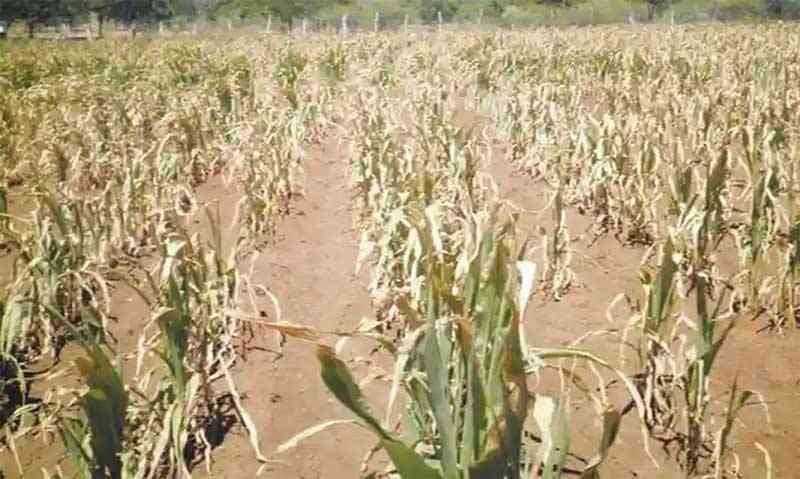
DRIVING on Zimbabwe’s highways has become a nightmare, with stray livestock frequently causing traffic accidents after years of economic crisis, vandalism and neglect that has seen the collapse of key infrastructure.
BY THOMAS MADHUKU
One consequence of Zimbabwe’s chaotic land redistribution programme is increased carnage on the roads due to the destruction of roadside fences meant to keep cattle and other domestic animals from straying onto the highways.
Zimbabwe previously boasted of having one of the best road networks in southern Africa and the country was a yardstick for development and road management with most major highways fenced as a way of ensuring the safety of vehicles from livestock and pedestrians.
The entire road fencing that covered around 18 460 kilometres of State highways is gone, seriously affecting the safety of road users, with accidents involving livestock now a common feature on the country’s major roads.
Motorists have noted that it now requires a good memory of dangerous spots along highways due to stray animals and the absence of signage that indicates dangerous spots.
“It is better for some of us who frequent this route [Harare-Beitbridge] because we now know dangerous spots and likely livestock crossing points,” Simbarashe Mhlanga said.
He added that though he is now familiar with the road, he is not 100% safe because animals can just stray onto the road in the least expected areas.
- Chamisa under fire over US$120K donation
- Mavhunga puts DeMbare into Chibuku quarterfinals
- Pension funds bet on Cabora Bassa oilfields
- Councils defy govt fire tender directive
Keep Reading
Archford Takawira, who stays in Mvuma along the country’s busiest and most lucrative highway, said communities contiguous to the road have been affected by the destruction of road fencing as they frequently lose their livestock.
“Long back, roads were fenced such that both people and livestock would use designated crossing zones, but that is no longer the case. Many a time we are losing our livestock because once they escape from the kraal, chances are high they will end up on the road resulting in accidents,” Takawira said.
He added that during the night, cattle lie on tarred roads, drawn by the warmth of the surface. Beasts with darker hues are harder for motorists to spot from a distance,resulting in accidents.
A Beatrice resident, Chipo Marerwa, blamed government for neglecting the country’s roads, especially highways resulting in vandalism.
“People vandalised road fences which they used to construct their homes and kraals because no one was monitoring and apprehending culprits,” Marerwa said.
Social commentator Richard Gara noted that most farms along highways were also responsible for the increase in accidents involving livestock and wild animals due to vandalism of farm equipment, including fencing which protected livestock from straying onto the roads.
“Areas that have new farmers have been dangerous spots for motorists because they breed livestock and some of these farmers vandalised the fencing they inherited from former white farmers,” Gara said.
He challenged the government through Zimbabwe National Road Authority (Zinara) to utilise money from tollgates to fix road fencing and other infrastructure to stop the carnage caused by stray animals.
“The money collected from tollgates should be used to develop and improve road infrastructure, especially in areas around Matabeleland which is the country’s cattle ranching hub,” Gara said.
He added that the state of Zimbabwe roads had adversely affected economic recovery plans as it is difficult and costly to use road transport to deliver goods in any part of the country.
A haulage truck driver, Erasmus Muganyi, said in the absence of efficient rail transport, businesspeople relied on road transport to move goods, but it is difficult due to the poor state of roads.
Officially opening the Kadoma six-way toll plaza last year, Transport and Infrastructure Development minister Obert Mpofu, bemoaned vandalism of road infrastructure which he said put road users at risk.
“I note with great concern that road furniture such as studs on the carriageway, which are meant for the safety of the motorist, are being removed and that delineators from culverts along some completed sections have been vandalised. Further, road fencing continues to be vandalised.
“This has resulted in stray cattle and donkeys being hit by vehicles leading to loss of human life and property. I urge Zimbabweans from all walks of life to safeguard our road infrastructure, not only for us but for future generations to come,” he said.
Mpofu said adequate road infrastructure is a fundamental pre-condition for transport systems.
Zimbabwe has a total road network of 88 000km which is made up of 18 460km of State highways, 8 194 km of urban roads, which fall under the jurisdiction of urban councils, and rural roads which make up 61 000km of the total road network.

Vehicle-animal collision is a common cause of accidents and deaths in Zimbabwe and has in the past claimed the life of Retired Air Commodore Mike Karakadzai who died after his vehicle hit a cow.
According to the Zimbabwe Republic Police National Traffic 2014 report, 41 016 road accidents were recorded between January and December 2014. At least 6,6% of the recorded road accidents in 2014 were caused by stray animals.
Coach and Bus Operators Association (CBOA) chief executive officer Alex Kautsiro said the absence of road fencing led to loss of lives as coaches and buses were exposed to accidents due to stray animals.
“Perimeter fences need to be re-erected on all major highways to improve the driving experience. As CBOA, we have engaged the government with the hope that going forward, as part of highways reconstruction for the country, fencing becomes a mandatory process in the design of these,” he said.
Kautsiro added that this has led to passengers forming perceptions about some bus operator brands, thereby resulting in low occupancy against high operational costs. He advised motorists to avoid night driving.
Zimbabwe’s economic revival plans should prioritise road rehabilitation to address efficiency and viability of the sector to steer success of the Zimbabwe Agenda for Sustainable Socio-economic Transformation.











